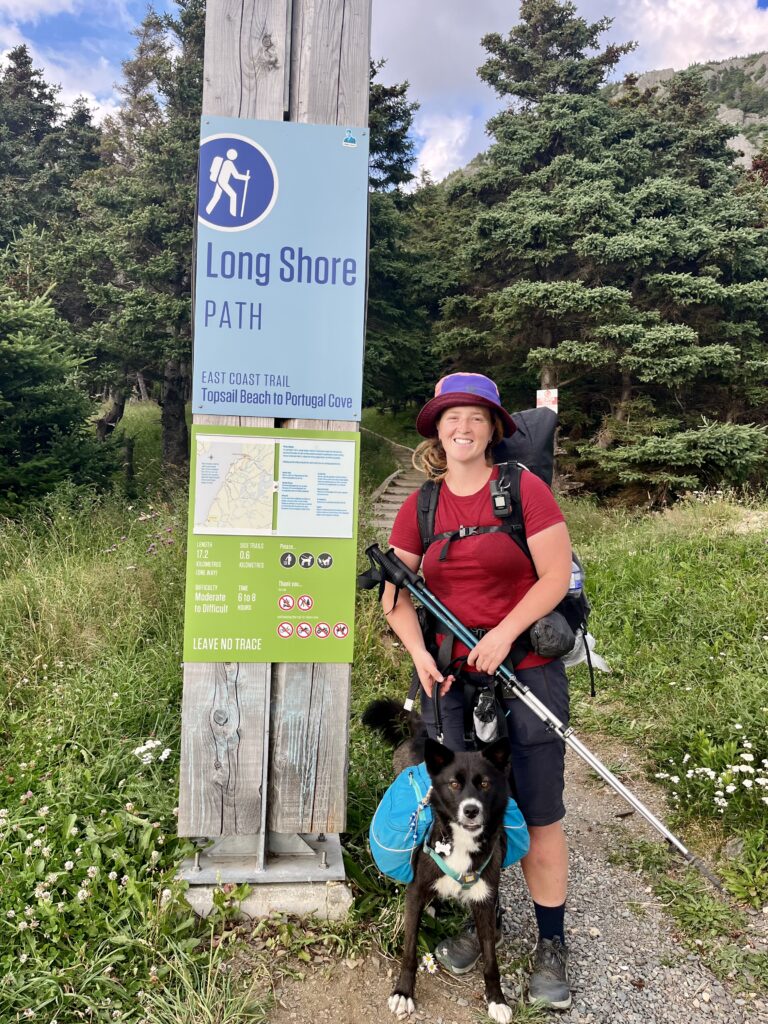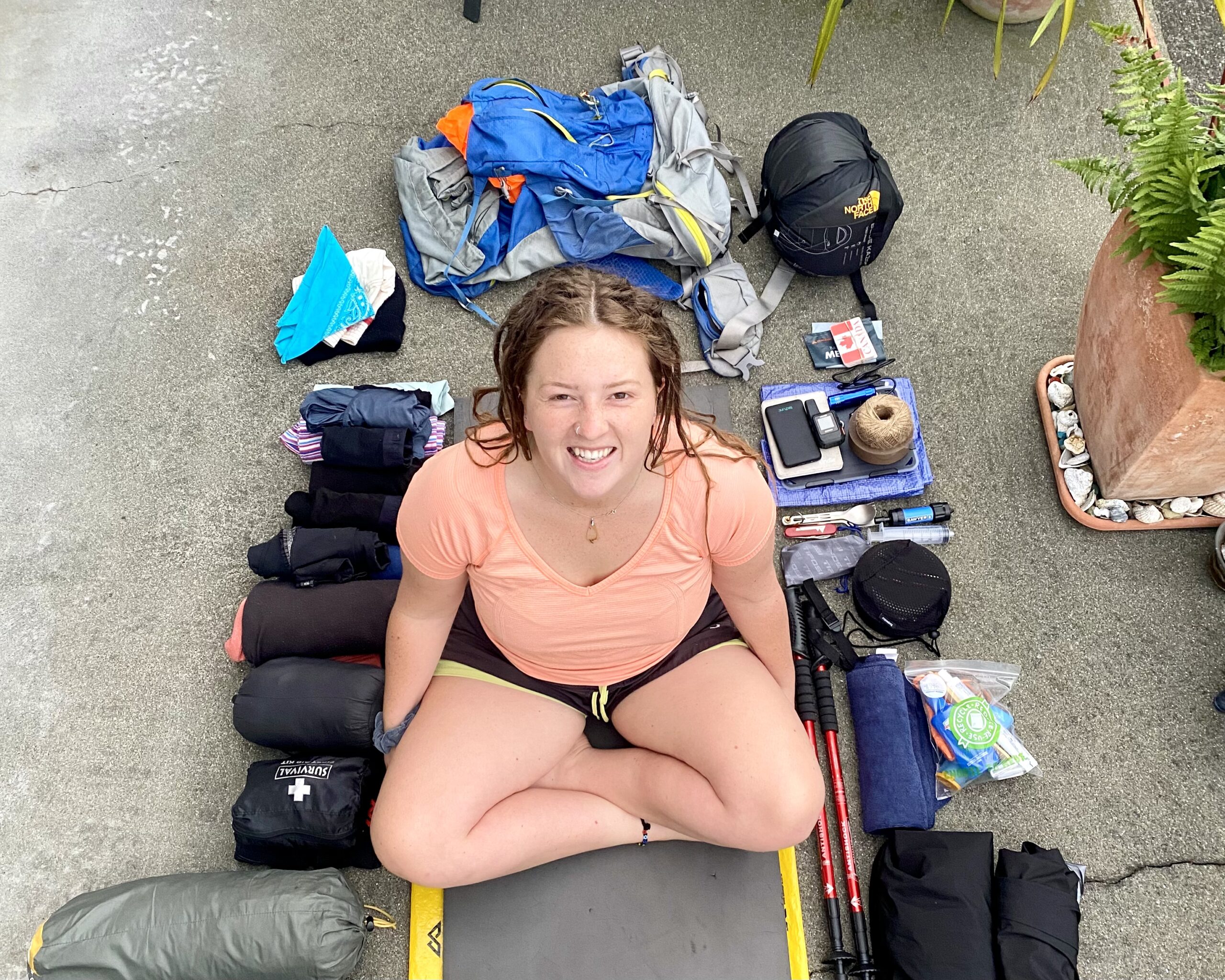Your Ultimate Thru-Hiking Packing Guide
I live by the virtue that the ultimate gear list can combine second-hand treasures with heavily researched and top-rated equipment. We all have to start somewhere so here's my take on which items are worth the expense and which one's you can hunt for at your local thrift store first.

Disclaimer: This list is adequate for the summer and spring/fall shoulder season’s. Stay tuned for a winter gear list! Additionally, nothing listed on this page are affiliate links. They are all items that I use personally and most of which I put a LOT of research into before purchasing.
The Ultimate Three:
Backpack: KS Ωmega Framed Alpisack
I started thru-hiking Te Araroa on my sister’s old 65L pack. Halfway through, it started falling apart leading me to loan another unnecessarily large and heavy-duty pack off of my mother. Upon completing this thru-hike, I knew it was time to start investing in ultralight gear. My pack was the first item I made the switch on. I researched extensively and heard only good reviews about KS Ultralight Gear. I especially like that these packs are made to order so you can choose the best fit as well as add accessories accommodated to your intended use. Not to mention it’s more sustainable than mass production!
I settled on the Alpisack with the foresight of using it for various winter activities as well as for the added volume when carrying extra gear. My pack was made with the VX21 fabric. I also added two removable waist pockets and a webbing strap to turn said pockets into a satchel – this comes in really handy on my rest days!
Tent: Tarptent StratoSpire 2 Li (with solid interior)
I spent hours upon HOURS researching what tent to buy. This is my most expensive piece of kit and well, the one that feels like it provides me with the most safety while on trail. It is my home after all! I needed a tent big enough for Stoney and I without sacrificing weight. I also wanted to find an ultralight shelter rated for four-season’s. While I haven’t tested it in snowy conditions yet I have been extremely satisfied with how well it has held up in record levels of rainfall and several thunderstorms on open peninsulas. It has withstood winds between 50-60km/h.
Sleeping Bag: The North Face Blue Kazoo (the model I use is no longer manufactured but the one linked is similar).
Honestly speaking, I am on the hunt for a new sleeping bag. I bought this sleeping bag right before beginning Te Araroa when I was fresh out of university and on an extremely tight budget. My friend worked at The North Face so was able to get me a discount and of course, I wanted to settle on something that was decent but also a bargain for me. This bag has been substantial for what I’ve needed it for so far. However, I’m not confident that it would keep me warm enough all through the shoulder seasons. The warmth to weight ratio also isn’t very high in comparison to other sleep systems so this is the next piece of ultralight gear that I will be researching and investing in.

My Clothing:
Tops:
- T-Shirt: Fjall Raven Abisko Wool SS W
- Base layer: Long Sleeved Merino – I found my current one at a thrift store years ago and I am yet to need/want a replacement. (I usually throw in a spare base layer when hiking in colder temperatures.)
- Fleece sweater – also found my current one at a thrift store.
- Outer shell: The North Face Dryzzle FUTURELIGHT Jacket – no longer manufactured.
- Down jacket: I still wear the same one I bought from Kathmandu when I was a teenager. I don’t carry this in summer.
- Sports bra
Bottoms:
- Shorts: Macpac Women’s Trekker Shorts – the MOST comfortable hiking shorts I’ve found so far. Zipped pockets included!
- Base layer: MEC T0 Base Layer Bottoms – Men’s – I found these on clearance and they fit me perfectly, so if I can get a bargain, why not get it in men’s?! (I also throw in a spare bottom base layer when in colder temperatures.)
- Softshell pants: The North Face Dryzzle FUTURLIGHT Full Zip Pant
- Merino underwear (x3 pairs): Macpac Women’s 180 Merino Brief
Feet:
- Trail Shoes: Altra Women’s Lone Peak 8
- Sandals: Bedrock Cairn Evo 3D PRO Sandals
- Socks: One thin pair for hiking in/getting wet and one thick pair for sleeping in – keep these one’s dry!
Extras:
- Swimsuit
- Bucket Hat: BUFF Sun Bucket Hat in Hak Purple
- Beanie: Eeyou Istchee Lifestyle Classic Toque – I layer this with my mum’s old Kathmandu Merino base layer hat that she had for years. I can no longer find a similar one being produced.
- Gloves: Mine are from MEC and no longer in supply. However, The North Face have similar ones: Etip Recycled Gloves.

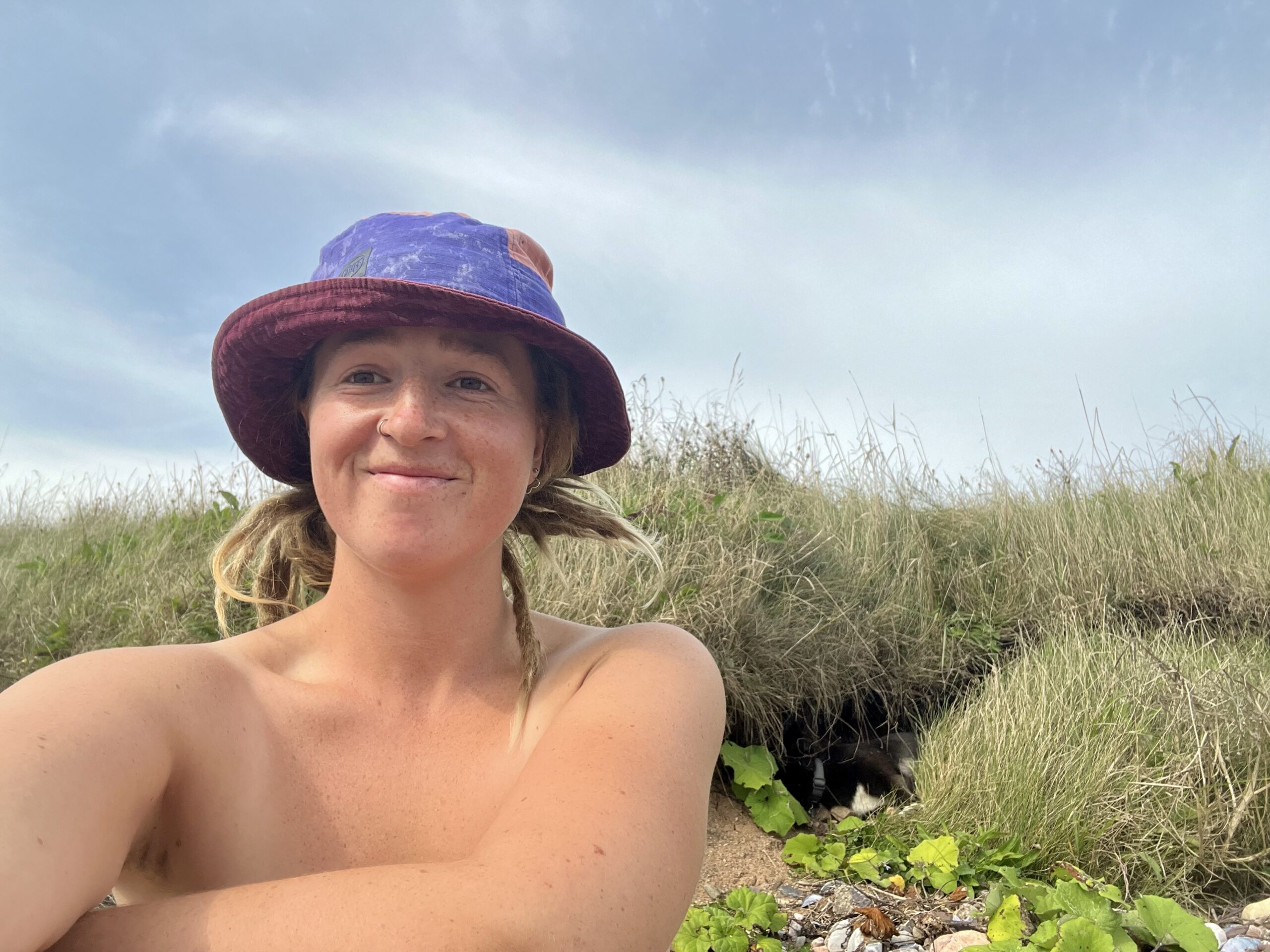
Sleep:
- Lightweight Sleeping Pad: Aifounds Foldable Closed Cell Pad – I swap or layer this with my Therm-A-Rest NeoAir XTherm NXT Sleeping Pad during cold weather camping.
- Sleeping Bag Liner: Sea to Summit Reactor Extreme Sleeping Bag Liner
- Pillow: I stuff any leftover clothes/soft items in my sleeping bag case and use this as a pillow.

Food & Hydration:
- Camp Stove: SOTO Amicus Stove without Igniter
- Pot Set (with plastic cup and dishcloth): Torpedo7 Expedition Cook Set
- Fuel: any isobutane fuel canister
- Water Filter: Sawyer Mini
- Bear Canister or Bear Bag: I opt for the BearVault 500 when in bear country and a bear bag when in lower risk areas.
- Spork: I use a non-branded one that my grandma gifted me for Christmas one year.
- Eco-friendly dish soap
- Water bottle

Hygiene:
- Bamboo toothbrush
- Toothpaste & floss
- Soap: I use an eco-friendly shampoo bar which works for my hair and body all in one.
- Deodorant
- Reef-Safe Sunscreen
- Roll of toilet paper
- Trowel: BoglerCo Ultralight Trowel
- Compact towel: Kathmandu Microfibre Towel
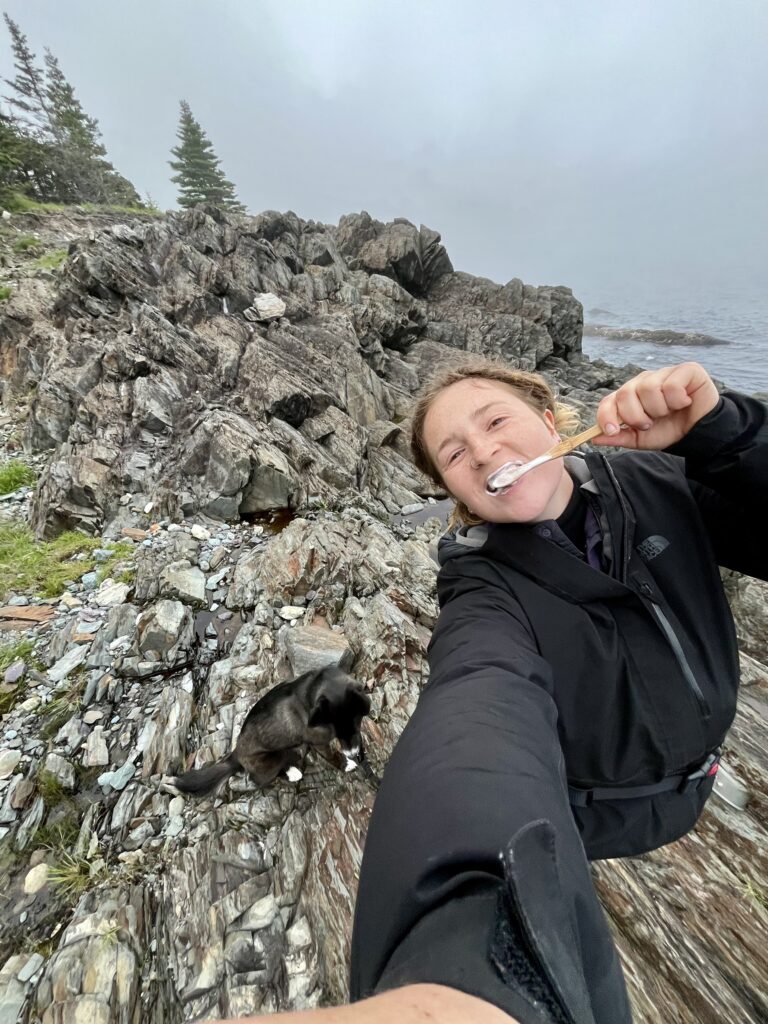
Tech:
- Cell phone with downloadable maps & charging cable.
- Camera: GoPro Hero 10 Black with spare battery and memory card, plus charging cable.
- Powerbank: INIU 20,000mAh – this is the best weight to power ratio I can find up to 20,000mAh.
- Multi Plug Outlet to charge all devices at once, when I have access to power.
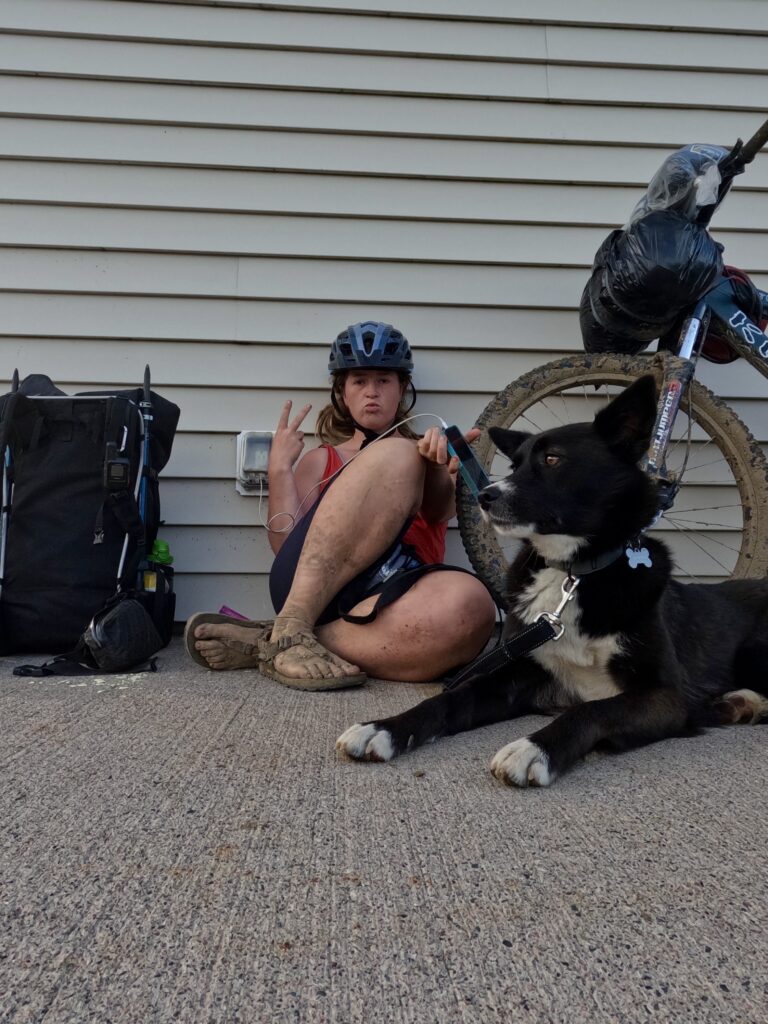
Safety Equipment:
- Personal Locater Beacon (with active satellite plan): Garmin inReach Mini.
- First aid kit with emergency blanket.
- Headlight: Nitecore NU25
- Whistle
- Knife: Victorinox Huntsman (I categorised this as safety equipment although I’ve only ever used it to cut my fruits and veggies!)
- Bear Spray – know how to use it and check it’s expiry date before each trip!
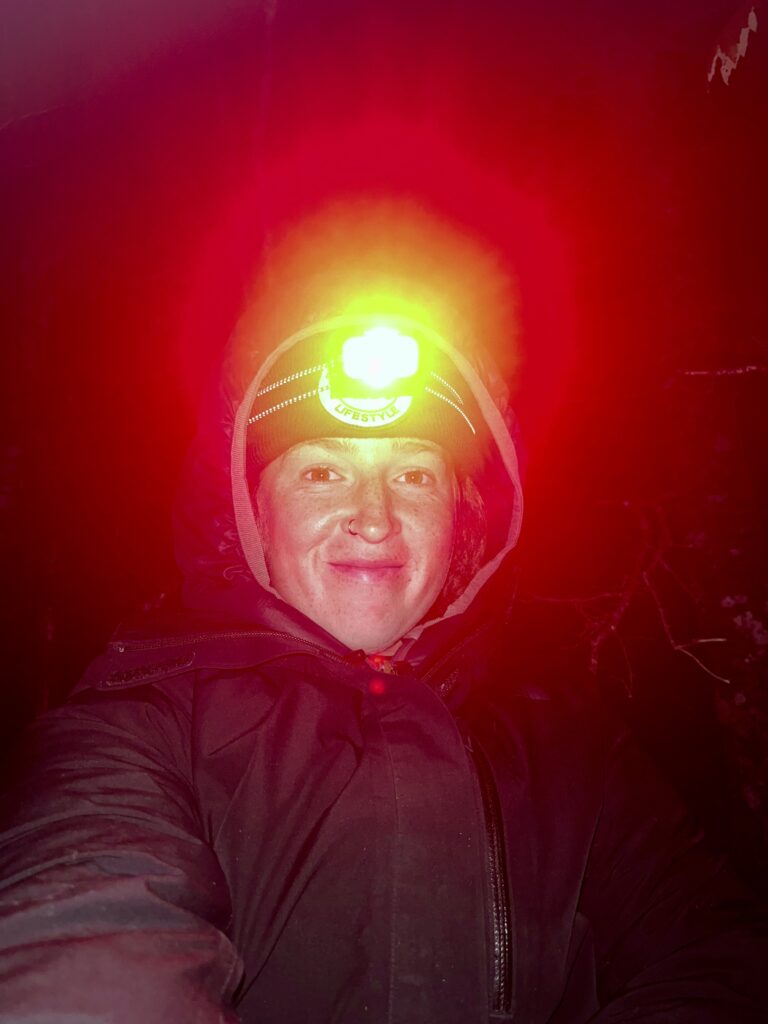
Stoney’s Gear:
- Backpack: Ruffwear Approach – Dogs can carry up to 25% of their body weight but should not start at the maximum weight.
- Handsfree leash: I use my friend’s old one. Hands free is the MOST practical when hiking.
- Lightweight Travel Bowl: Outward Hound Port-A-Bowl
- Brush: Stoney sheds a lot when hiking in the heat! Please don’t sacrifice brushing your dog to save on weight.
- Bed: my Therm-A-Rest delaminated so I have converted the better half of it into a dog bed.
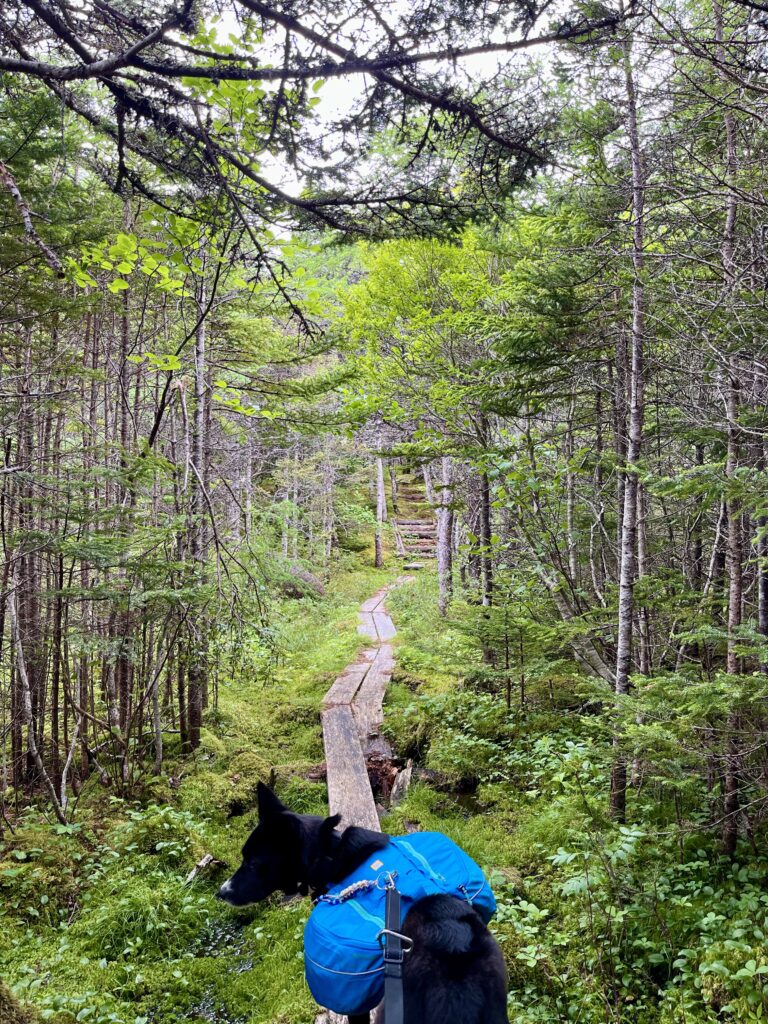
Miscellaneous:
- Trekking Poles: Komperdell Trekmaster Powerlock – poles save your knees & distribute the effort throughout your body. They are SO worth the purchase!
- Pack Rain Cover
- Pack Liner – a heavy duty garbage bag could work too! Although this may be more of a short-term option as it could tear easily.
- Bug Face Net – I tend to just tolerate the bugs rather than wear one of these but it’s good to carry in extremely buggy areas!
- Carabiner
- Sunglasses
